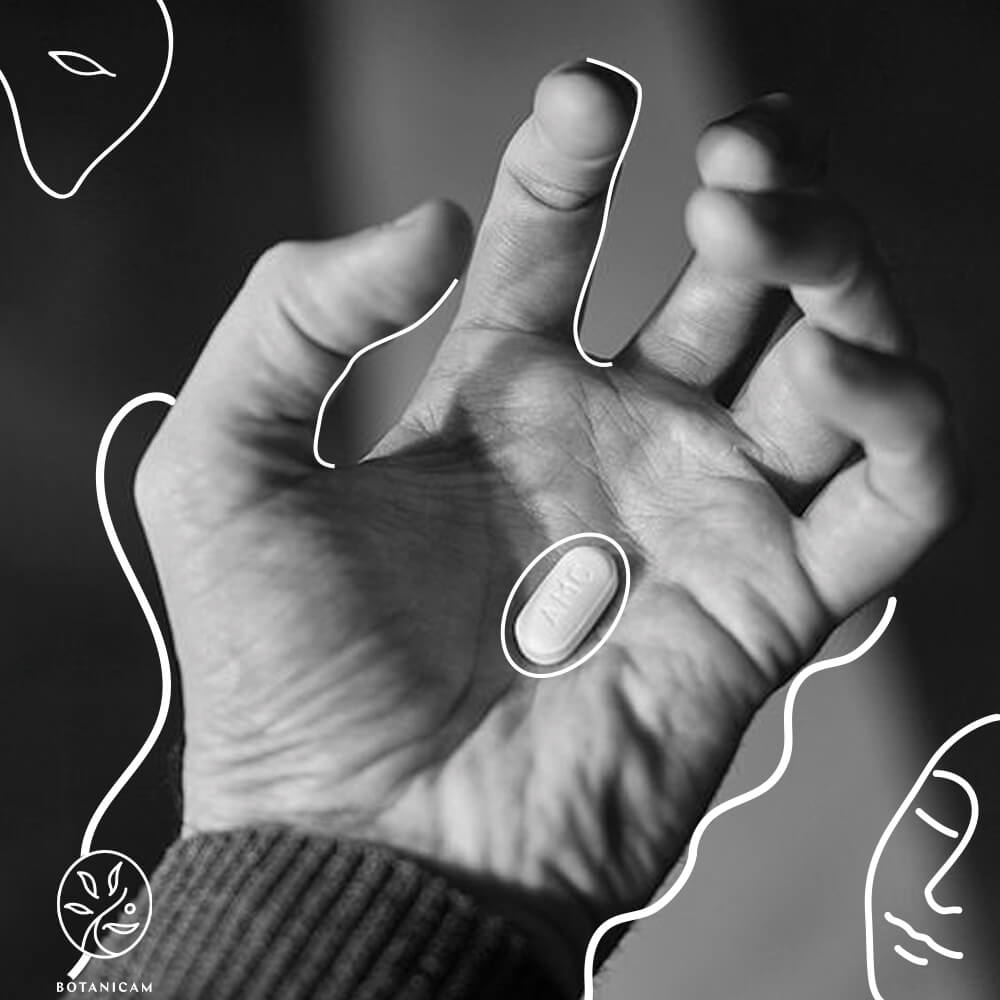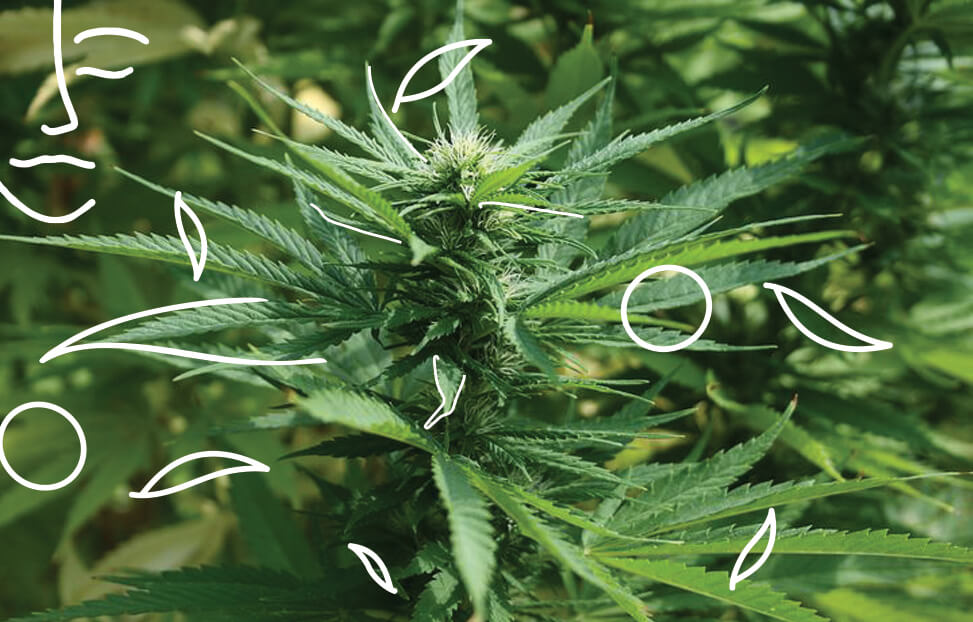The Opioid Epidemic
CB receptor expression is weak in the areas of the brain stem that regulate respiration—this suggests that respiratory depression, a potentially fatal adverse effect of drugs (a risk even before coronavirus), would not likely occur when using cannabinoids as painkillers.
What is the Opioid Epidemic?
The misuse of opioids—a few quick facts:
❏ 21-29% of those prescribed opioids for pain will misuse them
❏ 8-12% develop an opioid disorder
❏ 4-6% transition to heroin
❏ 80% of those who use heroin misused prescription opioids first
❏ In the U.S., 130 people per day die from an opiate overdose

It is not that opioids serve no purpose. They do—people need pain relief. The issue is that overprescribing dangerous drugs without any warnings or wellness programs (i.e., to address addiction prevention or safe use) does not seem like an optimal way to treat pain, does it? Why do prescription drug companies continue manufacturing without taking any accountability? Why are we so in love with these synthetic opioid compounds that are causing so much psychological pain and so much physical damage?
What are the doctors saying?
One growing concern among doctors is the prevalence of opioid-induced hyperalgesia (OIH): A state of nociceptive (pain resulting from damage to the body) sensation caused by exposure to opioids. It is confusing, but this is a paradoxical response where a patient using opiods becomes more sensitive to pain. The pain is different from the original pain, as it is spread out to more of the body than the originally targeted area, it is of lesser quality, and it is, predictably, harder to pinpoint.
This raises a few questions:
❏ If a person becomes more sensitive to pain, will they not become more likely to abuse a substance?
❏ What is the difference between a drug and a medicine?
CB1 receptors, CB2 receptors and pain perception
What are the CB1 and CB2 receptors?
They are part of the endocannabinoid system and are found in nearly every major system within the body. These receptors activate many of your physiological processes such as pain sensation, appetite, mood, and memory. CB1 and CB2 receptors work against inflammatory and neuropathic (caused by damage to the nerves/damage to the immune system) pain.
CB1 receptors are the primary receptors in the nervous system and throughout the body. These receptors can be found in the adrenal glands, adipose tissue, heart, liver, lungs, prostate, uterus, ovaries, testes, bone marrow, thymus, and tonsils. CB1 receptors also mediate the suppression of mast cell activation responses (part of our allergic pathways, which can propel inflammatory pathways).
CB2 receptors work mostly in the immune system. When stimulated, these receptors stimulate opioid receptors in the body, which inhibit pain perception without harming the nervous system (as opiods do). These receptors also modulate immunologic responses (your immune system) and inhibit the release of proinflammatory factors. This means that CB2 receptors help manage pain perception, while simultaneously bringing the body back to a state of health.
Inhibition of pain (CB1) and anti-inflammatory effects (CB2) work together to inhibit pain while healing the body. Working with these receptors (and the entire endocannabinoid system) is a novel way to work with pain, because it avoids the detrimental side effects to the central nervous system caused by opiods.
Why isn’t my endocannabinoid system already helping with pain?
The endocannabinoid-nerve transmission supports adrenal function, minimizes pain by acting as a retrograde signal, and allows your body to recharge and to remain in balance.
It is likely that a sick person trying to heal is already starting at a deficit. The endocannabinoid system becomes depleted in modern life due to pollution, worry, not enough sleep, inflammatory foods, acidic food, etc. Simultaneously, the system can become overburdened when trying to manage sick cellular health in the body.
CBD is a phytocannabinoid, it conserves and increases the amount of endocannabinoids in your body by inhibiting the enzymes which are responsible for breaking endocannabinoids down. This preserves enough endocannabinoids to ensure CB receptor activation, so that the ECS can function optimally. CBD is a way to replenish a depleted endocannabinoid system.
Cannabinoid Pain Modulation Theory
The superficial dorsal horn, mediated by amino acids GABA and glycine, is the site of synaptic termination for a plethora of peripheral sensations such as pain, itch, and temperature. Cannabinoids presynaptically inhibit GABA and glycine transmission. This is why scientists are theorizing the possibility that cannabinoid analgesia (inability to feel pain), at the level of the superficial dorsal horn, is mediated through different pathways than those of opioid analgesia. In animal models of neuropathic pain, opioids do not retain their efficacy, while cannabinoids do.
This means that cannabinoids are working on the pathways that inhibit pain perception—the same pathways that opioids work on. While a patient needs to increase the prescription of opioids over time, the opposite is true with CBD. As a person’s endocannabinoid system is replenished, less CBD is needed.

How can CBD help the opioid crisis?
CBD works with your CB1/CB2 receptors, as well as the entire endocannabinoid system. Having a functioning endocannabinoid system is a great base for optimal cellular health. CB receptors work on the same pathways as opioids do, so they are able to block the perception of pain, while simultaneously healing the body. If a person refuses to put down the opioids, CBD could function well alongside an opioid prescription in order to prevent the overuse or abuse of opiates.

An Article By Evie Louise
Evie Louise is a recent psychology graduate from New York University. She is a certified in International Cannabinoid Clinical Therapy. Evie sees all forms of the cannabis sativa plant as the future of psychiatry, and hopes to use it in her therapy practice as a full spectrum approach to mental health and wellness.

I like the thoroughness of the information. Before use or prescription, I have to know whatever is available. Your site saves me time and effort by eliminating the usual rush to the PDR. Thank you!